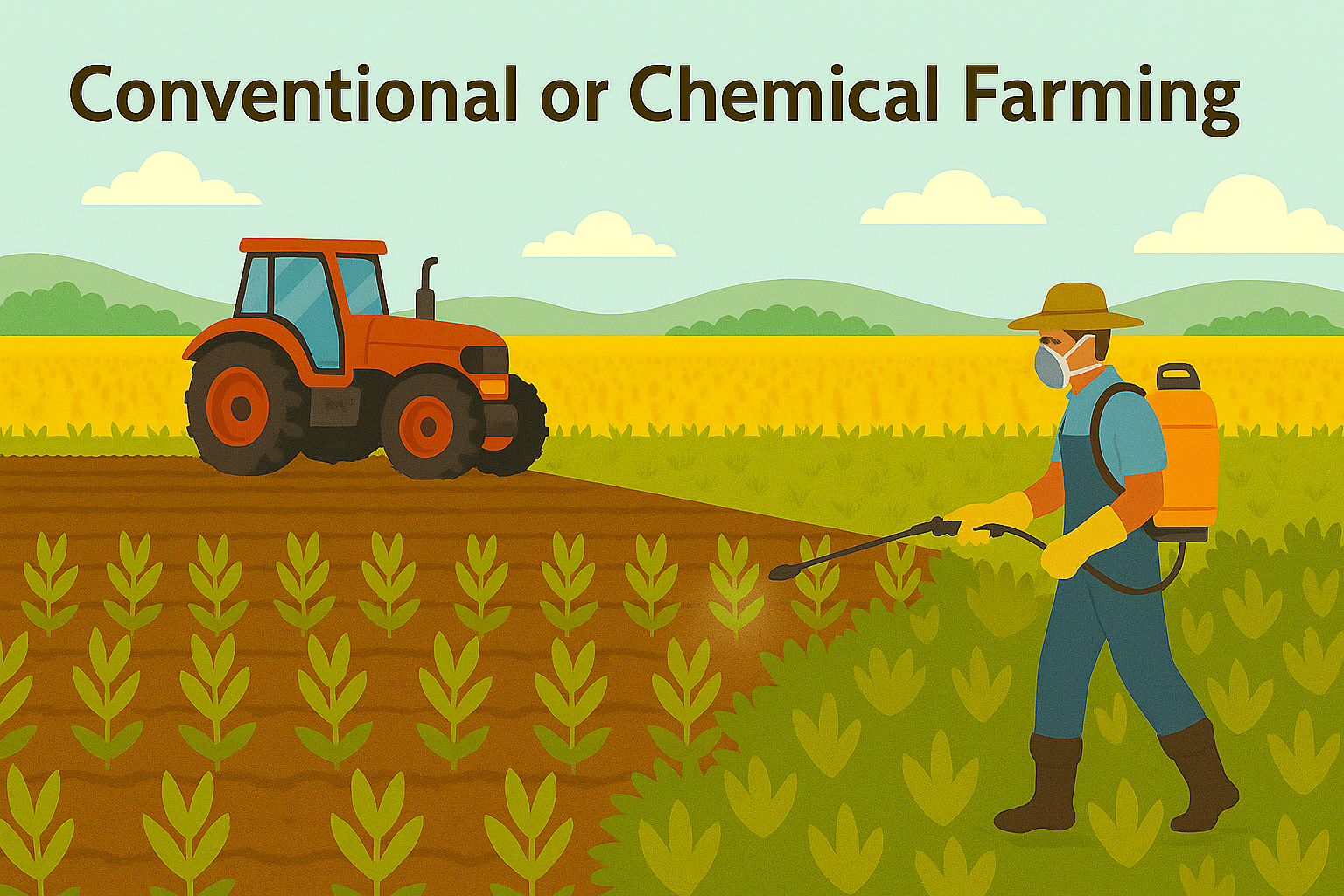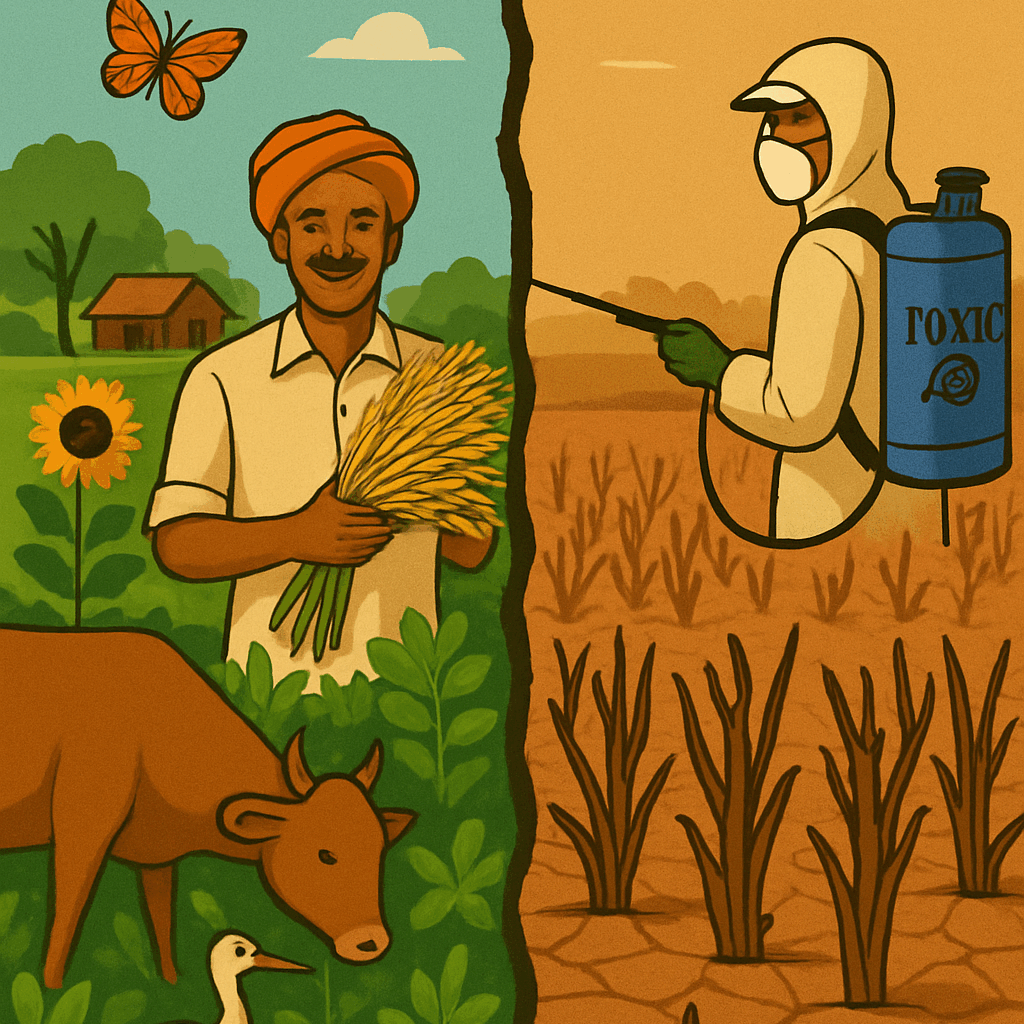🌿🧪 What is Conventional or Chemical Farming?
Conventional or chemical farming relies on synthetic fertilizers, chemical pesticides, and monocropping (growing only one crop most often repeatedly on the same land). While it began as a solution to increase food production, it has caused long-term damage to the environment, human health, and farming communities.
🕰️ A Quick History: How It All Began
After World War II, surplus chemicals were turned into farm inputs. This led to the global rise of industrial agriculture. Countries adopted high-yield crops and chemical packages to boost food production.

🌾 India’s Green Revolution: A Turning Point
In the 1960s and 70s, India embraced the Green Revolution to combat hunger and food shortages. It focused on:
- High-Yield Variety (HYV) seeds
- Intensive irrigation
- Chemical fertilizers and pesticides
The result? A dramatic increase in food production — especially in Punjab, Haryana, and Western UP.
But soon, the cracks began to show.
⚠️ The Hidden Damage of Chemical Farming
🚜 1. Monocropping Harms the Soil and Biodiversity
- Depletes specific nutrients in the soil inviting various pests when the crops start growing
- Reduces crop resilience to pests and diseases
- Wipes out natural biodiversity and beneficial insects
☣️ 2. Toxic Inputs Hurt All Living Beings
- Pesticides kill pollinators like bees and butterflies
- Fertilizers like urea harden the soil, and chemical runoff pollutes water bodies harming aquatic life
- Linked to health issues in humans: cancers, hormonal disruption, respiratory illness
- Damages microbial life that keeps soil healthy
🕳️ 3. Unsustainable in the Long Run
- Soils become dependent on chemical inputs
- Groundwater levels plummet due to excessive irrigation
- Yields stagnate while costs rise
- Leads to farmer debt, ecological crisis, and food insecurity
🌍 A Global Wake-Up Call
Across the world, countries are now witnessing the consequences of chemical-based farming:
- Soil erosion
- Water contamination
- Biodiversity loss
- Climate emissions
India, too, is paying the price of short-term gains. Once-thriving regions of the Green Revolution now suffer from:
- Salinized, barren land
- Vanishing pollinators
- Farmer distress and migration
🌱 What’s the Alternative?
A healthy future lies in ahimsak farming. The practices in this form of farming:
- Restore soil health
- Protect water and biodiversity
- Remove reliance on chemicals
- Increase resilience to climate change and in fact help mitigate it
Organic farming, natural farming, permaculture, and agroecology are already being adopted by farmers across India and the globe. The ultimate is of course ahimsak or veganic farming.
✊ It’s Time to Choose Life Over Yield
Let’s always remember:
What fills our plate should not poison our earth or kill living beings.
What feeds us should not destroy the very hands that grow our food.

